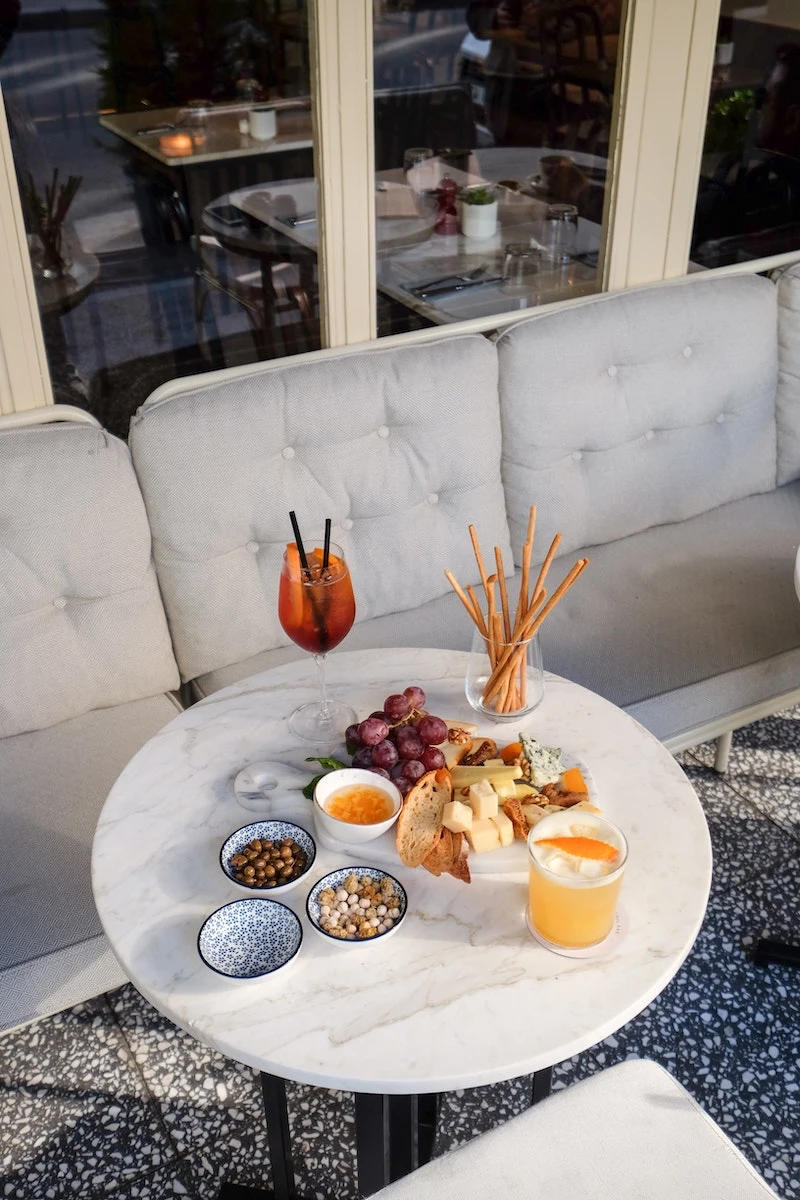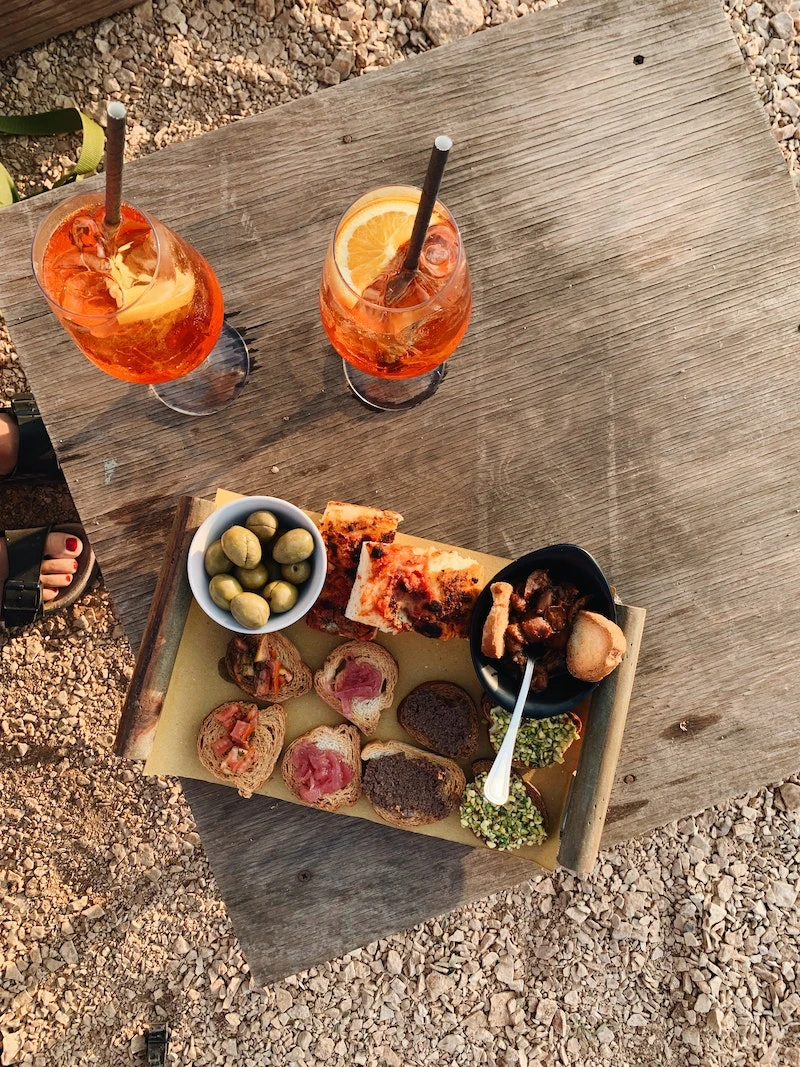The Real Aperitivo: It’s Not Happy Hour, It’s a Ritual (And Here’s How to Do It Right)
I still remember the moment the whole “aperitivo” thing clicked for me. It wasn’t in some high-end bar in Milan, but crammed into a tiny, buzzing piazza in a Tuscan town you’ve probably never heard of. The workday was over. The air was thick and warm, buzzing with chatter. And people weren’t just grabbing a drink—they were shifting gears. They were shedding the day and getting ready for the night. That’s the soul of the aperitivo.
In this article
After years of running bar programs and soaking up everything I could from the old-timers in Italy, I’ve learned to see it not as a happy hour deal, but as a respected, essential part of life. It’s a moment designed to open up your palate and the conversation. It gets your stomach ready for dinner and your mind ready to relax. Honestly, it’s a tradition that can completely change how you host friends and enjoy those golden hours in the early evening.

Why Bitter Is Better: Waking Up Your Appetite
Ever wonder why so many of those classic aperitivo drinks have a bitter edge? It’s not by accident; it’s smart biology. When your tongue tastes something bitter, like the flavors in Campari or Aperol, it sends a memo to your brain. That memo tells your digestive system, “Hey, get ready, food is coming!” It kicks saliva and gastric acid production into gear, which is exactly why a proper aperitivo makes you feel hungry, not full. It’s designed to start the engine, not flood it.
These bitter liqueurs are often called amari (Italian for “bitters”), and their recipes are fascinatingly complex, loaded with herbs, roots, and citrus peels. Some ingredients, like gentian root, are there purely for that bitter kick. Others, like rhubarb or orange peel, bring aroma and depth. Add in the carbonation from soda water or Prosecco, and you get a drink that’s uniquely refreshing and stimulating. This is why a super-sugary cocktail just doesn’t fit the bill here. The goal is to awaken the appetite, not knock it out with sweetness.

The Essential Drinks: Your Home Bar Toolkit
When I train new bartenders, I tell them to master just a few key pillars of the aperitivo world. You don’t need a hundred bottles to do this right. You just need the right ones to start.
1. The Spritz Family
The spritz is probably the most famous of the bunch. Its formula is a simple 3-2-1 ratio, which means it’s a breeze to make, even when you have guests over.
- 3 parts Prosecco: Grab a dry (Brut) Prosecco. You don’t need to spend a ton—a reliable bottle from a brand like La Marca or Mionetto usually runs about $12 to $18 and works perfectly. The most important thing is that it’s nice and cold! Warm bubbly is just sad.
- 2 parts Bitter Liqueur: This is where you can choose your own adventure. Aperol is the crowd-pleaser with its bright orange sweetness and low bitterness. Campari is its bolder, more assertive cousin—more bitter, more complex, and a bit boozier. For something in between, look for Select Aperitivo; it has these lovely rhubarb and juniper notes that are just fantastic.
- 1 part Soda Water: A splash of good, very bubbly soda water lifts the whole drink.
A quick tip: Build it directly in a large wine glass over lots of ice. Pour the Prosecco first, then the bitter liqueur. Top with soda and give it just ONE gentle stir with a spoon to combine. If you stir it like crazy, you’ll kill all those lovely bubbles.

2. The Negroni and Its Variations
Ah, the Negroni. A truly perfect cocktail. It’s a sophisticated, powerful drink with an easy-to-remember, equal-parts recipe.
- 1 part Gin: You want a classic London Dry style with a good juniper backbone. Something like Beefeater or Tanqueray is perfect and won’t break the bank.
- 1 part Campari: In a classic Negroni, there’s just no substitute. That unique bitter-orange flavor is the heart and soul of the drink.
- 1 part Sweet Vermouth: This is where you can really make a statement. A vermouth like Cocchi Vermouth di Torino will give you spicy, citrus notes. Carpano Antica Formula is richer, with vanilla and cocoa flavors. A good bottle of sweet vermouth, like Dolin Rouge, costs around $15 and is incredibly versatile.
Heads up! A critical rule: Once you open a bottle of vermouth, it MUST live in your refrigerator. It’s a fortified wine, and it will go bad if you leave it on the shelf for months. If your Negronis start tasting off, old vermouth is usually the culprit.

Pro Technique: Stir a Negroni, never shake it. Shaking makes it cloudy and over-diluted. Stir it with ice in a mixing glass for about 20-30 seconds, until the glass gets frosty. Strain it over a big, fresh ice cube in a rocks glass. Before you drop in the garnish, hold the orange peel shiny-side-down over the drink and give it a firm pinch. You’ll see the oils spray over the surface—that’s called “expressing” the peel, and it adds an amazing aroma.
Fun Variations to Try:
- Negroni Sbagliato: This literally means “mistaken” or “bungled” Negroni. The story goes that a bartender accidentally grabbed a bottle of Prosecco instead of gin. What a happy accident! It’s lighter, bubblier, and a fantastic alternative if the classic is too intense for you.
- Americano: This is the Negroni’s predecessor. Just swap the gin for soda water. It’s tall, refreshing, and lower in alcohol.
- Boulevardier: A richer, warmer version perfect for cooler nights. It uses bourbon or rye whiskey instead of gin.
3. Let’s Talk Non-Alcoholic Options
The spirit of the aperitivo is about the ritual, not the alcohol. And these days, there are some incredible non-alcoholic options so everyone can join in. You can find sophisticated NA aperitifs from brands like Ghia or Lyre’s Italian Spritz, which are designed to have that signature bitter, botanical flavor. A simple mix of one of these with tonic or soda water over ice with a lemon twist is absolutely delicious and feels just as special.
The Food: Small Bites to Tease, Not Spoil
The food served during aperitivo is called stuzzichini, which means “to nibble” or “to tease.” That’s the perfect description. This isn’t dinner; it’s a collection of small, savory bites to go with your drinks. From my experience, quality always wins over quantity here.
In places like Venice, you’ll find cicchetti—things like creamy salt cod on polenta or sweet-and-sour sardines. In the south, it might be as simple as a stunning bowl of local olives and some savory bread rings called taralli. It’s all about simple, high-quality ingredients.
Easy Stuzzichini You Can Make at Home
When you’re hosting, you want to be with your guests, not stuck in the kitchen. Here are a few of my go-to, low-effort, high-reward snacks.
- Great Olives & Nuts: Don’t just dump them in a bowl. Get some good quality olives (Castelvetrano are buttery and amazing), drain them, and toss them with a strip of lemon peel, a smashed garlic clove, and a sprig of rosemary. Let that sit for an hour. Game-changer.
- Whipped Ricotta Crostini: This looks incredibly fancy but is ridiculously easy. Seriously, here’s all you do: 1) Take about a cup of whole milk ricotta and whip it with a whisk until it’s light and airy. 2) Season it well with salt and pepper. 3) Spread it on toasted baguette slices and top with a drizzle of good olive oil and some flaky sea salt. Done.
- A Simple Board: Instead of a massive platter with five average things, choose one or two great items. A wedge of real Parmigiano-Reggiano and some good prosciutto is all you need. Let them sit at room temperature for about 20 minutes before serving to let the flavors really pop.
By the way, a quick but important note on food safety: If you’re serving meats, cheeses, or anything creamy, don’t let it sit out for more than two hours. I’ve seen this go wrong before, and it’s just not worth the risk. Keep plates small and refill them from the fridge as needed.
How to Host Your Own Aperitivo
Bringing this ritual home is so rewarding. It’s a low-pressure way to have friends over without committing to a full dinner party.
Your Beginner’s Aperitivo Bar (Under $75)
To get started, you can build a fantastic core bar for less than you think.
- A bottle of dry Prosecco: $12-$18
- A bottle of Aperol or Campari: $20-$28
- A bottle of quality Sweet Vermouth (like Dolin): $15
- A solid bottle of London Dry Gin (like Beefeater): $18-$22
With just these, you can make a Spritz, a Negroni, an Americano, and a Sbagliato. For tools, all you really need is something to measure with (a jigger), a long spoon, and a glass to stir in. Oh, and ice! Use the best ice you can. Those cheap silicone molds for large cubes make a huge difference in how slowly your drink dilutes.
Want to Try This Tonight? Start Simple.
Feeling overwhelmed? Don’t be. You don’t need all this stuff to start. Just grab a bottle of Campari and some club soda or sparkling water. Pour a shot of Campari (1.5 oz) over a glass full of ice, top with soda, and squeeze in a big wedge of orange. Boom. You’re having an aperitivo. Start there. The ritual is waiting for you.
For a Crowd: Batch Your Cocktails
If you’re having more than a few people over, batching is a lifesaver. To make a ready-to-pour Negroni batch for about 10 drinks, just combine these in a bottle or pitcher: 10 oz (300ml) Gin, 10 oz (300ml) Campari, and 10 oz (300ml) Sweet Vermouth. Then add 5 oz (150ml) of filtered water—this mimics the dilution from stirring with ice. Stick the whole batch in the fridge to get it nice and cold. To serve, just pour it over a big ice cube and add your orange peel. (Just remember: don’t batch anything with fresh juice or bubbles!)
It’s All About the Pause
Through all my years behind the bar, the biggest lesson I’ve learned is that the aperitivo isn’t really about the perfect recipe or a fancy glass. It’s about the intention behind it.
It is a deliberate, joyful pause. It’s a bridge from your day-to-day duties to the pleasures of the evening. It can be as simple as a glass of vermouth on the rocks with a lemon twist. The important part is that you take the time to stop, sip, nibble, and connect. That’s the whole point.
Inspirational Gallery with Photos
Campari or Aperol? It’s the classic aperitivo debate. Aperol is lower in alcohol (11%) with a bright orange-vanilla sweetness, making for a lighter, more approachable Spritz. Campari (24-28% ABV) is its bolder cousin: intensely bitter with notes of rhubarb and grapefruit, it’s the heart of assertive cocktails like the Negroni or the Americano. Think of Aperol for a sun-drenched afternoon and Campari for a sophisticated evening prelude.
Beyond the Spritz, there’s a world of vibrant, bitter liqueurs to explore. If you enjoy the complexity of Campari, try seeking out a bottle of Select Pilla, the original Venetian bitter used for a classic Spritz in Venice. For a truly unique flavor, look for Cynar, a bittersweet liqueur made from artichokes and 13 herbs. It’s surprisingly delicious with soda and an orange slice, offering an earthy, vegetal alternative.
How do you create that perfect “piazza” vibe at home?
It’s all about engaging the senses. First, the soundtrack: skip the top 40 and try a playlist of Italian greats like Paolo Conte or Fabrizio De André, or even modern Italian indie pop. Dim the main lights and use warmer, indirect sources like table lamps or string lights. Finally, encourage mingling by arranging seating in small, conversational groups rather than in a line facing a screen.
- Bite-sized cubes of Parmigiano Reggiano or Pecorino.
- A small bowl of high-quality marinated olives.
- Crunchy, ring-shaped taralli crackers.
- Thin breadsticks (grissini) wrapped in Prosciutto di Parma.
The key to perfect aperitivo snacks, or ‘stuzzichini’, is simplicity and quality. These small bites are meant to tease the palate, not overpower it.
A crucial point: an aperitivo is not a pre-dinner buffet. The goal is to stimulate hunger, not satiate it. One of the most common mistakes when hosting is over-serving the food. Keep the portions small and the options limited to just two or three simple items. Remember, the star of the show is the drink and the conversation; the food is just a supporting actor.
Legend says the Negroni was born in 1919 in Florence when Count Camillo Negroni asked his bartender to strengthen his favorite Americano by replacing the soda water with gin.
The vessel matters. A proper Spritz is best served in a large, stemmed wine glass. This allows plenty of room for ice, keeps the drink cold without chilling your hand, and channels the aromatic citrus and herbal notes toward your nose. For a Negroni, a heavy-bottomed rocks glass (or Old Fashioned glass) feels substantial and provides the perfect home for a single, large ice cube.
Can you participate in the ritual without alcohol? Assolutamente!
Italy has a long tradition of non-alcoholic aperitifs that still deliver that signature bitter kick. Look for brands like Crodino or Sanbittèr. These come in small, single-serving glass bottles and have a complex, bittersweet flavor. Serve one over ice in a nice glass with a slice of orange, and you have the complete experience, sans alcohol.










